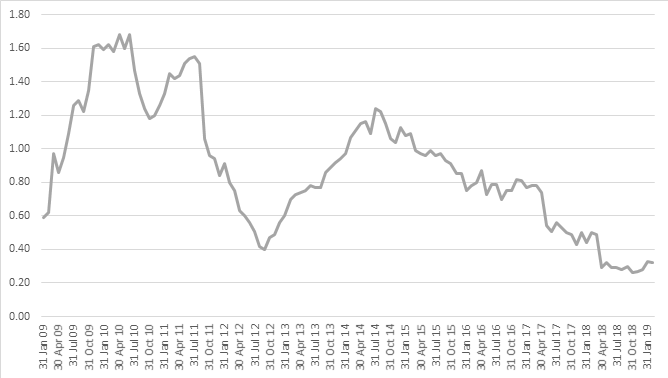In the current environment, longer term 5-year fixed rates are becoming increasingly popular.

Paul Adams (pictured) is sales director at Pepper Money
One of the most over-used words of 2019 so far must surely be “uncertainty”, but given the ongoing political instability, there are few other phrases that have so appropriately described the first quarter of the year.
Rarely in history has there been so much conflicting speculation about the future for jobs, house prices and the wider economy. In your role as a mortgage adviser, you can’t change the political direction of the country, but you can adapt your advice with consideration to the economic outlook and the prospects for your clients.
Every client is different, of course, and your advice will depend on their individual circumstances, plans and aspirations, but in general, when the road ahead looks uncertain, borrowers are more inclined to opt for the greater certainty and peace of mind of a fixed rate. And, in the current environment, longer term 5-year fixed rates are becoming increasingly popular.
There is another benefit of course. On 5-year fixed rates, affordability can be stressed at the pay rate, which is often lower than a notional rate and this means that, in the right circumstances, it could help your clients to borrow more in order to meet their lending objective.
Last September, the Financial Times reported that 5-year fixed rate mortgages had overtaken 2-year options, with lenders and brokers confirming that more borrowers were opting for longer-term security, despite the higher costs or borrowing for five years.
Closing the gap
However, the gap between the cost of 5-year fixed rates and 2-year fixed rates is closing.
The latest data from the Bank of England reveals that as of the end of February this year the average 5-year fixed rate mortgage was just 0.32% more expensive than the average 2-year fixed rate. On a loan size of £200,000, on an interest only basis, this means the cost of certainty for an extra three years could cost just over £50 a month, which for many is a small price to pay for peace of mind.
This represents a historically low cost differential between 5-year and 2-year money, as longer term swap rates continue to anticipate a low-rate environment for the foreseeable future.
In the last decade, the difference in cost between the average 2-year fixed rate and the average 5-year fixed rate peaked at 1.68% in the summer of 2010 – more than five times the current gap.
This means that, on a loan size of £200,000 on an interest only basis, a 5-year fixed rate could cost £277 more each month than a 2-year fixed rate, which is a much more significant consideration.
As recently as 2015, the gap between the average 2-year fixed rate and the average 5-year fixed rate was as high as 1.09% and so current pricing does as much to explain the popularity of 5-year fixed rates as the current political uncertainty.
Strong and stable
So, if your clients are crying out for something strong and stable amidst the political indecision, they could welcome a conversation about the benefits of fixing for a longer term. In the current environment, 5-year fixed rates can provide stability through the turbulence and pricing has rarely been stronger.
But they are not right for everyone. Half a decade is a long time, during which people’s plans and priorities can change and locking in for five years can carry Early Repayment Charges for the full period of the deal.
This will be a consideration if your clients have any intention to move home or redeem their mortgage in the foreseeable future.
This doesn’t stop you contacting your database to discuss their current concerns and considerations. For many of your clients, strong and stable could well be the favoured approach.
Difference between average 2-year fixed rate and 5-year fixed up to 75% LTV

Source: Pepper Money analysis of Bank of England data 04.05.19



